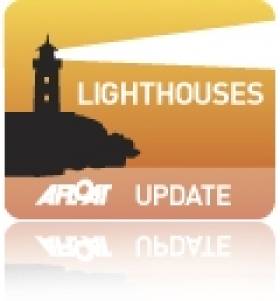Displaying items by tag: Ardnakinn
#lighthouse – The Commissioners of Irish Lights (CIL) have unveiled a new light emitting diode (LED) light at Ardnakinna lighthouse on Bere Island, Co. Cork on Wednesday 18th June 2014. This sectored light marks the western entrance to Castletownbere. The white sector of the light indicates the safe approach to Bere Island Sound and the approach to Castletownbere Harbour which is the largest whitefish port in Ireland.
Ardnakinna Lighthouse is located in an area of outstanding natural beauty on the Beara Peninsula and a favourite among those who visit, is the Ardnakinna Lighthouse Loop Walk. This project, while upgrading Ardnakinna Lighthouse, will also provide reliable and low maintenance operational needs for the next 20 years, achieving an annual reduction in operation costs of approximately 24% for CIL.
Mr Eoghan Lehane, Operations & Property Manager of CIL commented "the exhibition of this new light marks another stage in the modernisation of many of our stations as part of a multi-year Capital programme. While providing improved reliability for mariners, the use of modern low powered LED lights offers cost effective solutions that allow the removal of diesel generation equipment with consequent environmental benefits and maintenance savings".
The exhibition of this new light marks a significant milestone within CIL's major Capital Refurbishment Project currently being carried out at the lighthouse. The project includes replacing the mains-powered 1500W lamp with a new low power flashing LED light source in the existing lens. The light range will be reduced from 17n miles White, 14n miles Red to 14n miles White, 9n miles Red and exhibited in the hours of darkness only but will keep the same flashing character.
The Mains-fail Standby Diesel Generator will be removed and standby power will be provided by duplicated 24V batteries and chargers which will reduce maintenance requirements at the station as well as the need for fuel delivery. The installation of the LED light-source removes the need to change lamps and reduces power requirements to the station resulting in lower electricity costs.
The upgrading of Ardnakinna lighthouse demonstrates CIL's commitment to the economic and sustainable delivery of aids to navigation services around the coast of Ireland while keeping our mariners safe.























